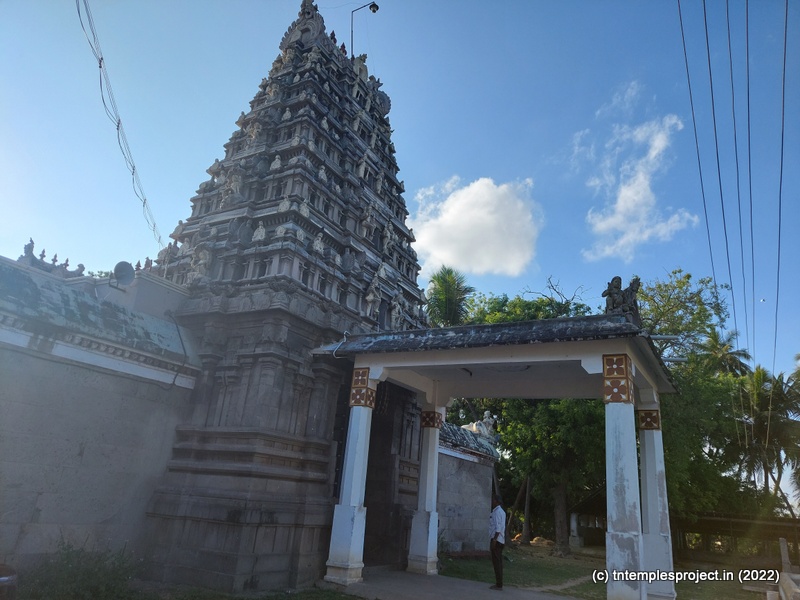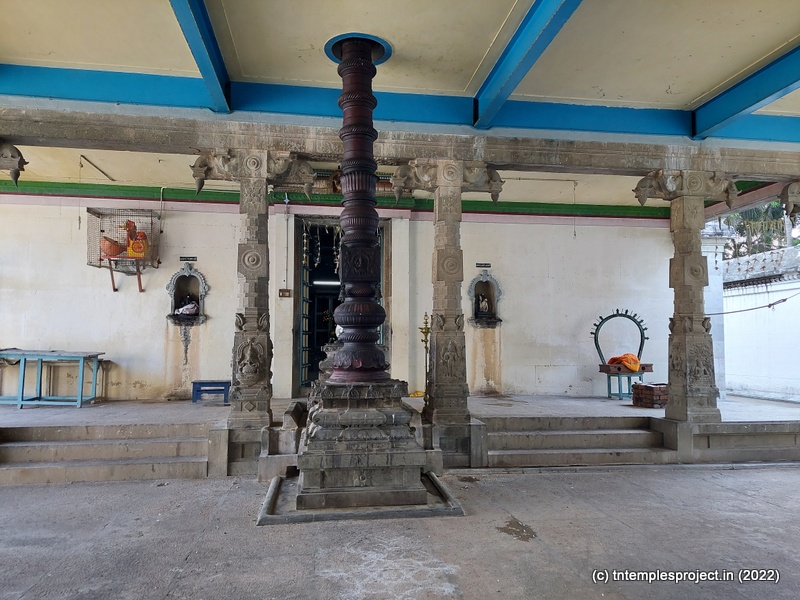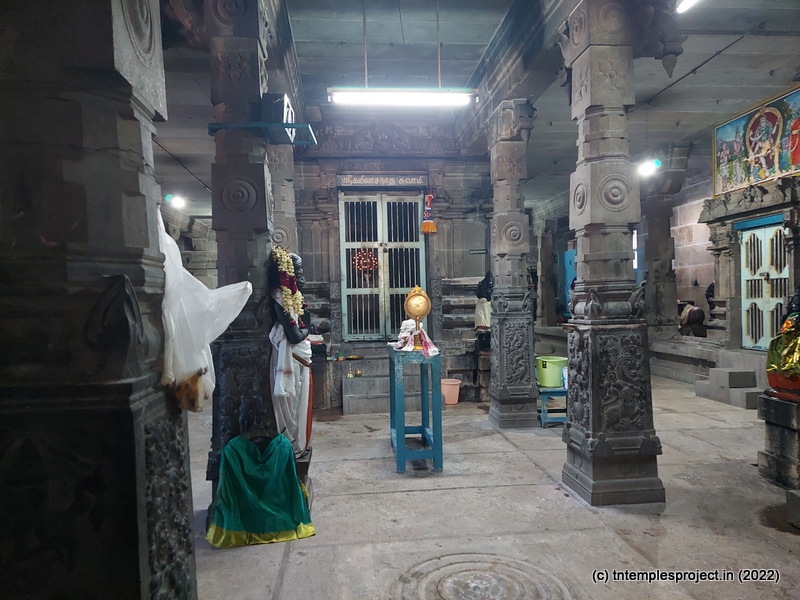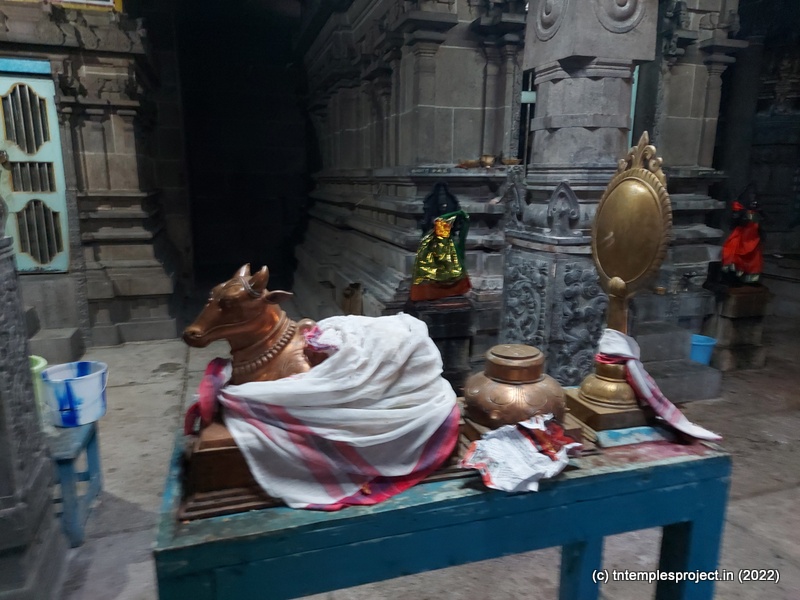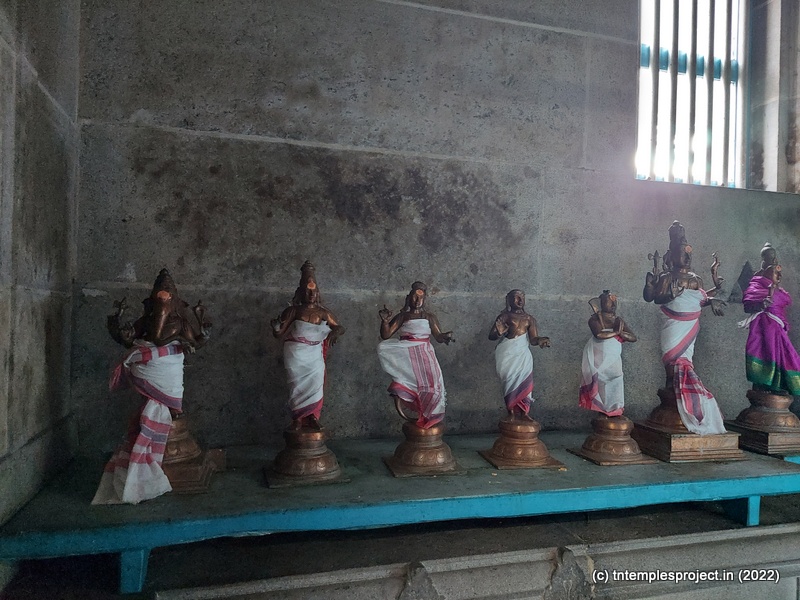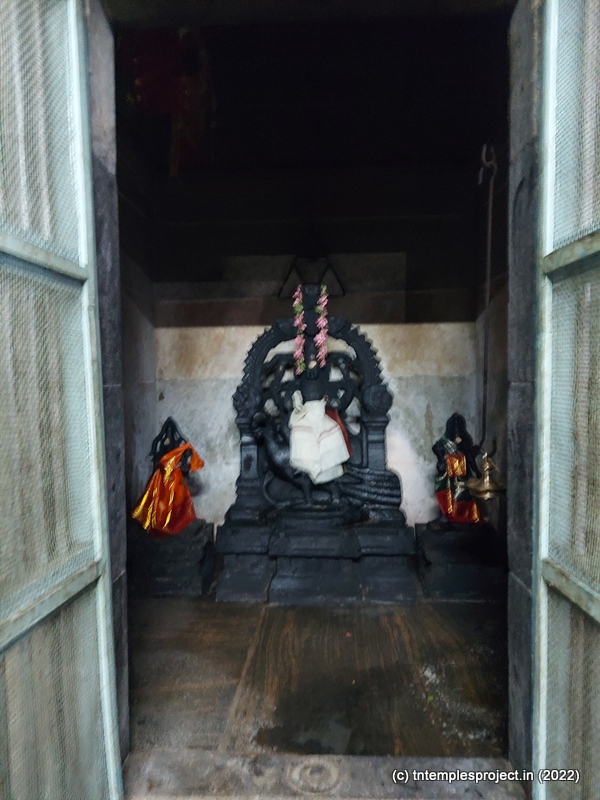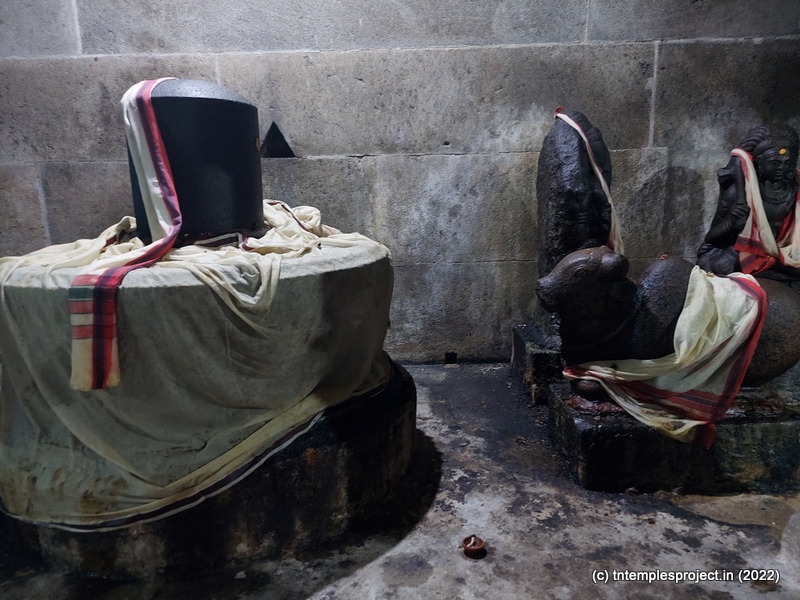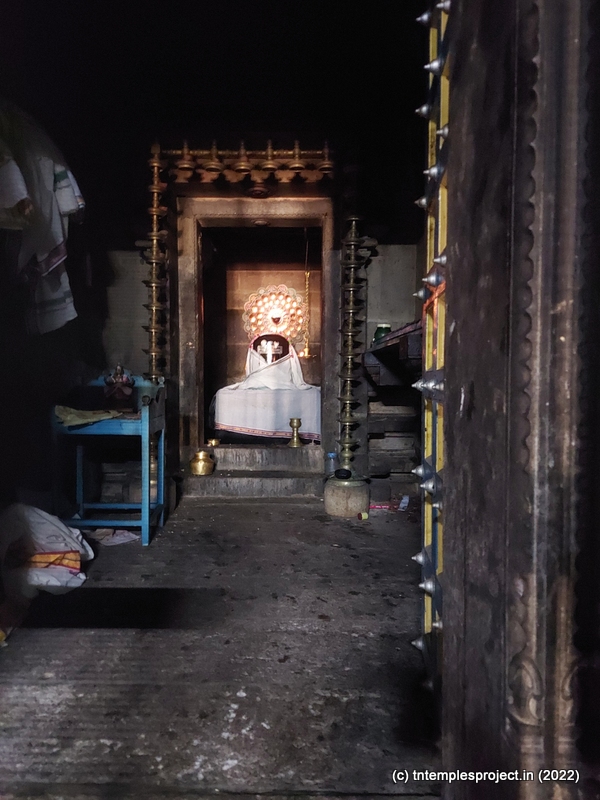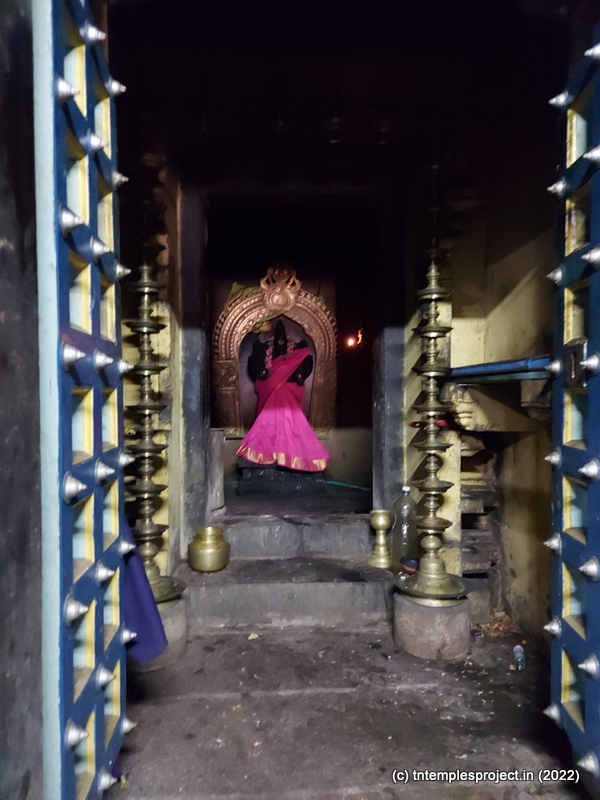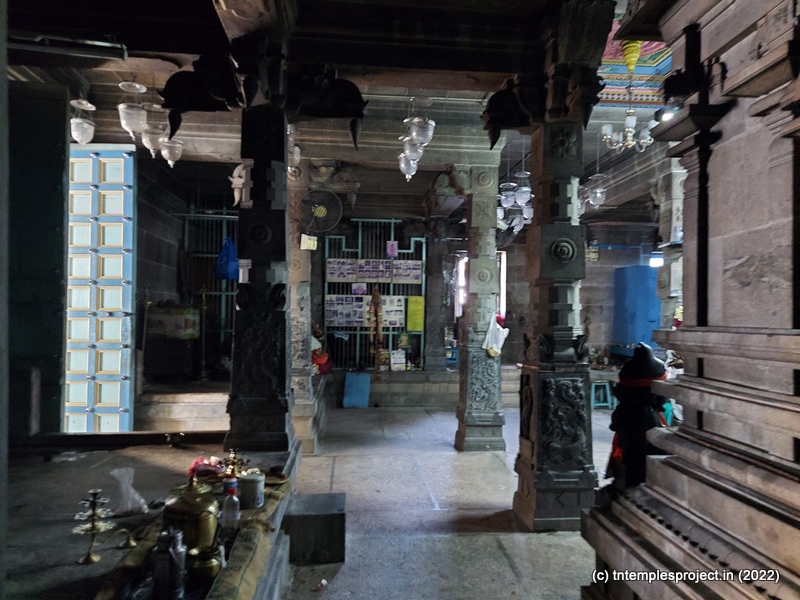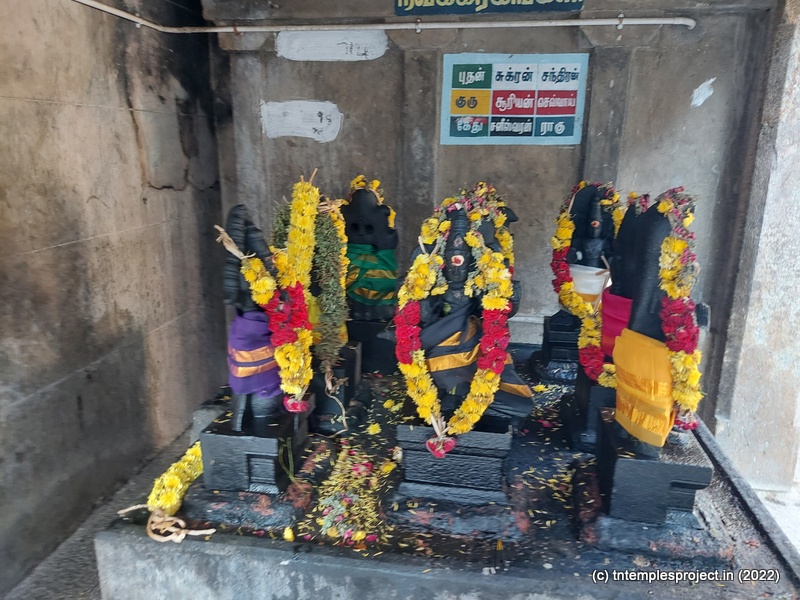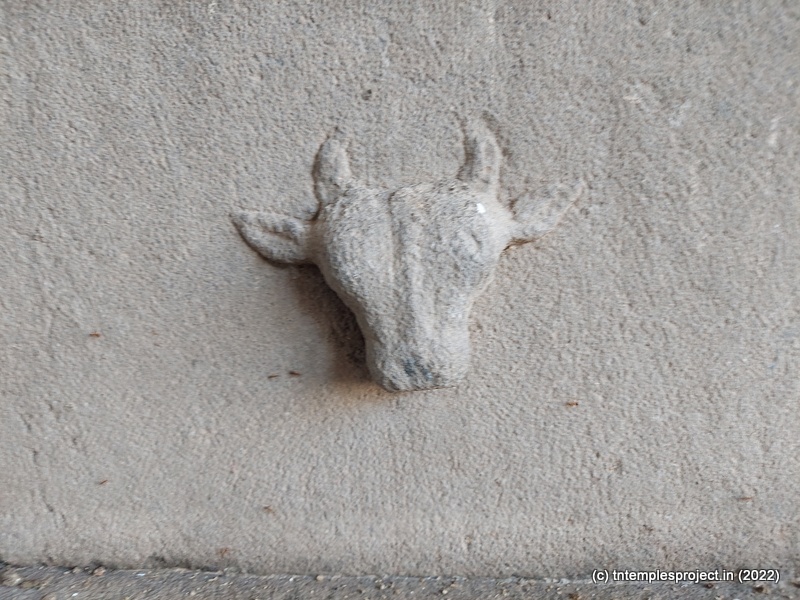Basic information about the temple
| Moolavar: | Kailasanathar | Ambal / Thayar: | Nityakalyani |
| Deity: | Siva | Historical name: | Tiruvaiyathukudi |
| Vriksham: | Teertham: | ||
| Agamam: | Age (years): | Timing: | 7 to 9 & 4 to 7 | Parikaram: |
| Temple group: | – | ||
| Sung by: | Temple set: | ||
| Navagraham: | Nakshatram: | ||
| City / town: | Mattiyanthidal | District: | Thanjavur |
| Maps from (click): | Current location | Kumbakonam (18 km) | Thanjavur (24 km) |
| Ariyalur (42 km) | Tiruvarur (51 km) |
Location
Sthala puranam and temple information

This temple is located between Papanasam (in Thanjavur district) and Tirukarugavur.
While at first glance the name of this village may not sound very interesting, it has an engaging etymology, which is also connected to the etymology of the nearby village of Ponman Meindha Nallur. Both villages are connected with the Ramayanam, and according to one local retelling, when Rama, Lakshmana and Sita were in the forest, Maricha took the form of the golden deer and grazed about in Ponman Meindha Nallur. The deer also stopped by a pond for a drink of water, which is why this place was named Man-meindha-thidal, and over time, this corrupted to Mattiyanthidal.
Several other villages in the vicinity are also named for incidents from the above episode of the Ramayanam. These include Kodukizhi, Mathagaram (Man-thangiya-agaram), Mannallur, Mathangarai (Man-thangiya-karai), Valathamangalam (Maanai-valaitha-mangalam), Mangudi, Vadakkumangudi, Semmangudi, and Pullamangudi, among others.
The temple is said to be a Tevaram Vaippu Sthalam, but unfortunately, no further information or sthala puranam is available about this temple. Today, the temple is being run by the Nagarathar community, and one can see several elements of Nagarathar influence in the renovated temple structure, design and architectural elements.
To the east of the temple’s raja gopuram lies the large temple tank. The raja gopuram itself is rather simple and is devoid of the detailed and intricate depictions of scenes from puranams, etc.
Inside the complex is a dhwajasthambam, followed by bali peetham and Nandi mandapam. The elevated mandapam beyond this is supported by pillars with superior architecture as evidenced by the bas relief carvings on them.
Beyond this is a door that leads us to the maha mandapam where there is a brass Nandi and darpanam. To the right is the Amman shrine. Vinayakar and Murugan, as well as two newly crafted dwarapalakas, guard the entrance to the garbhagriham.
In the koshtams are Vinayakar, Dakshinamurti, Lingodhbhavar, Brahma and Durga. In the prakaram are shrines for Vinayakar, Murugan with his consorts Valli and Deivanai, Gajalakshmi and Chandikeswarar. There are also separate shrines in the southern and western portions of the corridor, housing the Tevaram saints, and a Lingam with Nandi for Kasi Viswanathar.

The outer prakaram is very clean and well maintained, and interestingly, houses a shrine on the south-western portion, for Sundararaja Perumal with Sridevi and Bhudevi. The relatively newly constructed Navagraham shrine is also in this outer prakaram.
The fact that it is a Vaippu Sthalam, however, means that the original temple must have existed at least in the eighth century (Sundarar’s time) if not earlier (in Appar’s and Sambandar’s time). Even the architecture has no indications of the original temple, which must have been early Chola or even Pallava (when the Cholas were their feudatories in this region).
Other information for your visit
While the official temple timings in evening are from 4 to 7 pm, the priest normally arrives only around 5 pm or after.
Contact
Ramani 9944382849;
Phone: 04374 223316
Gallery

